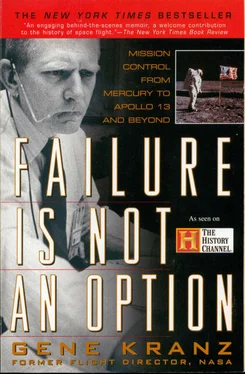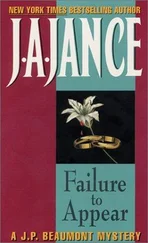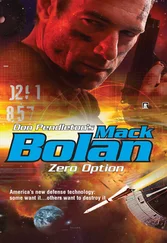Thirty years later I feel a sense of frustration that the causes that advanced us so rapidly in the 1950s and 1960s seem to have vanished from the national consciousness. We have become a nation of spectators, unwilling to take risks or act on strong beliefs. Since I grew up in the world of manned space exploration, I am particularly frustrated that we have abandoned the frontier that was opened in the 1960s. The American space industries and the NASA team that built and operated the spacecraft no longer exist. The proud spacecraft design and manufacturing teams at Grumman, North American, and McDonnell are only a memory.
Since my retirement from the space program in 1994 I have spoken to over a hundred thousand Americans in hundreds of business, professional, and civic forums. The story of our early years in space, of tragedy and ultimate triumph, has awakened Americans to the power of a dream and of clear goals. I believe there is a widespread interest in space that can be focused to support a public mandate for space exploration. The four steps needed to return to a visionary space program are:
First, put space on the national agenda . Space is not currently deemed a priority. There is no established constituency to lobby on behalf of space exploration. No current candidate for President has taken a strong position on space.
NASA, its contractors, and the technical space societies represent a sizable asset that with proper leadership and a single voice could bring space back onto the national agenda. As a federal agency, NASA is prohibited from lobbying on its own behalf. It can, however, provide appropriate information and educational materials that its employees and contractors need in order to make the case for a new and long-term effort in space.
A large corps of NASA and contractor alumni exists in every state in the union. The space technical societies and the NASA Alumni League must assume the leadership, and they must be supported by the rank and file of NASA and its contractors. We must all move into the public arena, speak at business and civic forums, and go into the schools in order to reach every sector of American society to carry the message of space. Unless every person who has ever worked on or dreamed of probing far into outer space is willing to make this commitment we cannot succeed .
Second, revitalize NASA . Lacking a clear goal the team that placed an American on the Moon, NASA, has become just another federal bureaucracy beset by competing agendas and unable to establish discipline within its structure. Although NASA has an amazing array of technology and the most talented workforce in history, it lacks top-level vision. It began its retreat from the inherent risks of space exploration after the Challenger accident. During the last decade its retreat has turned into a rout. The NASA Administrator is appointed by the President and to a great degree represents the current President’s views on space. If space is put on the national agenda for the coming national election, a newly elected President will have the opportunity to select new top-level NASA leadership that is committed and willing to take the steps to rebuild the space agency and get America’s space program moving again.
Third, develop a long-range plan for space . The last set of clear goals for space was produced in 1986 by a national commission that included Neil Armstrong, Chuck Yeager, Gerard O’Neill (CEO, Geostar Corporation), Jeane Kirkpatrick (former U.S. ambassador to the U.N.), Thomas Paine (former NASA Administrator), and many others. The report, entitled Pioneering the Space Frontier, was developed through a series of fifteen public forums held across the country and represented the opinions of a substantial portion of the public on the future of the civilian space program. The goals defined in 1986 are as good today as they were a decade and a half ago. We do not need to engage in another round of studies. We must establish a plan to meet the goals of the National Commission on Space.
The report, which was written shortly after the Challenger accident, projected the next fifty years of the space age and deliberated on NASA’s goals for the next twenty years. It articulated A Pioneering Mission for the Twenty-first-Century America:
To lead the exploration and development of the space frontier, advancing science, technology, and enterprise, and building institutions and systems that make accessible vast new resources and support human settlements beyond Earth orbit, from the highlands of the Moon to the plains of Mars.
Fourth, engage Congress in the space program . NASA Administrator Daniel Goldin, responding to a Clinton White House foreign policy initiative, brought Russia into the space station program as a major program element without the support of the U.S. Congress. The subsequent redesign of the space station, abrogation of existing contracts, and program delays cost NASA valuable support within Congress. Reinvigorating the space program entails significant costs and cannot happen without strong congressional leadership and support. NASA needs a new Administrator, someone who knows how to represent the space program in the political arena, someone like its second administrator, James Webb, who was a master of the bureaucratic process and a skilled builder of support alliances. A new Administrator with a clear set of goals, supported by an energized and vocal space alumni, can build a mandate for space.
A long-term national commitment to explore the universe is an essential investment in the future of our nation—and in our beautiful but environmentally challenged planet. An American-led program of multinational space exploration is a critical test of our intention to continue as a world leader in the twenty-first century. Only through such commitments will we inspire the youth of the coming century to step forward to preserve and protect the future of our nation and the rest of mankind. Only in this way will we develop new and difficult technologies, and make the scientific discoveries required to sustain our way of life and to make our world better.
This book began with the dream given to my generation, but I believe that President John F. Kennedy was addressing all generations to come when he said:
The United States was not built by those who waited and rested and wished to look behind them. This country was conquered by those who moved forward, and so will space… .
Well, space is there and we are going to climb it, and the Moon and the planets are there. And as we set sail we ask God’s blessing on the most hazardous and dangerous and greatest adventure on which man has ever embarked.
Our work is unfinished.
My wish as I close this book is that one day soon, a new generation of Americans will find the national leadership, the spirit, and the courage to go boldly forward and complete what we started.
Eugene F. Kranz
Dickinson, Texas, December 1999
The original astronaut Class of ’59 went their separate ways. Four survived to celebrate the thirtieth anniversary of the first lunar landing in July 1999. Astronauts present at the Cape for two days of commemoration and celebration on July 16 and 17 included Buzz Aldrin, Neil Armstrong, Gene Cernan, Wally Schirra, John Young, Charlie Duke, Al Worden, and Walt Cunningham, as well our leader, George Mueller. Duke, Young, and Armstrong joined us for the celebrations in Houston.
Others were at a funeral that took place the day before the thirtieth anniversary. Pete Conrad, one of the astronauts from the second group selected, was killed in a motorcycle accident. He was deeply missed, another “missing man” in the formation, a formation that included gallant men like Alan Shepard and Deke Slayton (who died of brain cancer in 1993) as well as Ted Freeman, Charlie Bassett, C. C. Williams, and Elliott See, who died in aircraft accidents before they could get their chance to reach for space—and the three others who would live in our collective memories forever, Gus Grissom, Ed White, and Roger Chaffee.
Читать дальше












